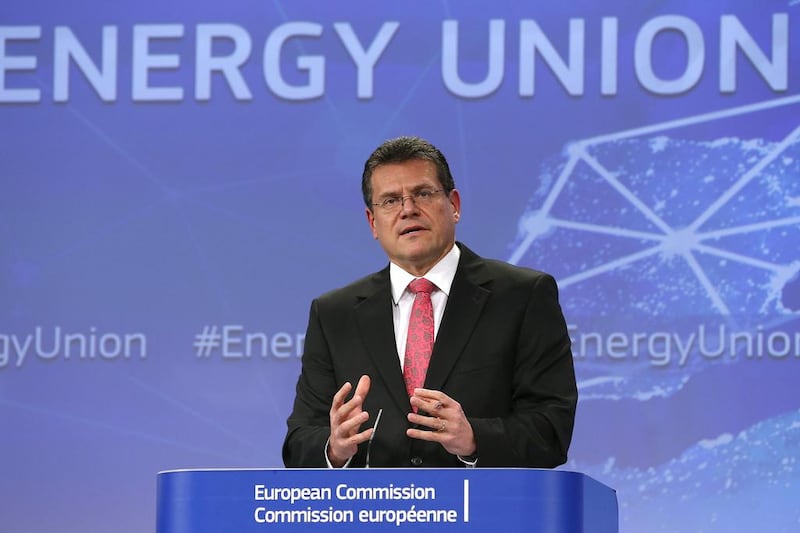The European Commission yesterday proposed an ambitious plan to merge the energy markets of the 28-country bloc in a move billed as the sector’s biggest shake-up in half a century.
The plan would intensify efforts to open a “southern gas corridor” to bring pipeline gas from Central Asia, and perhaps eventually the Middle East, to ease the continent’s reliance on Russian gas.
The energy “blueprint”, put forward by Maros Sefcovic, the vice president in charge of energy policy at the EC, the Brussels-based executive branch of the European Union, contained proposals to fully integrate the energy markets of the EU’s member countries, a process that has been moving along gradually for decades.
“This is a broad statement of intent at the very top level in Brussels,” said Arno Behrens, the head of energy research at the Centre for European Policy Studies in Brussels.
“It is attempting to bring energy policy back to the top of agenda as the EU has not been converging toward a common energy policy but diverging in many respects, including doing individual national deals with Russia,” Mr Behrens notes.
“To reduce dependence on Russia a common voice is needed.”
The EC’s proposals face a long process before they can come to fruition. The discussion timetable alone runs to 2019, noted Mr Behrens
The proposals would need to be put in the form of legislation and have to hurdle both the European Parliament and the EU’s 28 national governments, a process that would take years and would be likely to face as much resistance as past efforts.
But the document provides a framework for the executive and the member states to set out energy priorities, especially for plans to continue to “decarbonise” the continent’s energy system, increase the share of renewable energy supplies, integrate power grids, and improve security of supply.
The EU is highly dependent on external sources of energy, particularly Russian gas, a problem that reached crisis point in the winter of 2009, when Russia cut off gas to Europe for weeks because of a dispute with Ukraine. This has again come to the fore amid the Ukraine-Russia territorial conflict.
The EU imports 53 per cent of its energy at a cost of around EUR 400 billion a year and, taken as a bloc, it is the largest energy importer in the world. Six member states depend on Russia’s Gazprom for their entire gas imports and “therefore remain too vulnerable to supply shocks,” the EC report said.
The EU successfully blocked Russia’s attempt to increase its stranglehold when its intense lobbying forced the cancellation in Decmeber of Russia’s proposed South Stream gas pipeline, which would have dominated gas supplies into southern Europe.
The centrepiece of Europe’s “southern corridor” dream had been the Nabucco pipeline. But since the decision in early in 2013 by Azerbaijan not to supply gas from its Shah Deniz field, that project has looked in jeopardy unless alternative supplies can be secured.
Given the politics of the region, supplies from Iraq or Iran seem unlikely in the foreseeable future, analysts say.
But the Middle East’s share of Europe’s gas market should increase significantly at the expense of Russia’s anyway, mainly through the large network of liquefied natural gas intake terminals built, or planned for construction. EU LNG imports from all sources will grow from 31 per cent next year to 48 per cent in 2040, according to the Brookings Institute, a think tank. Meanwhile, the share of Caspian and Middle Eastern countries (Azerbaijan, Iran, and Iraq) will nearly triple, from 3 per cent in 2015 to 10 per cent by 2040, with the share of pipeline gas supplies from Russia falling from 31 per cent in 2015 to 23 per cent by 2040, Brookings says.
amcauley@thenational.ae
Follow The National's Business section on Twitter





